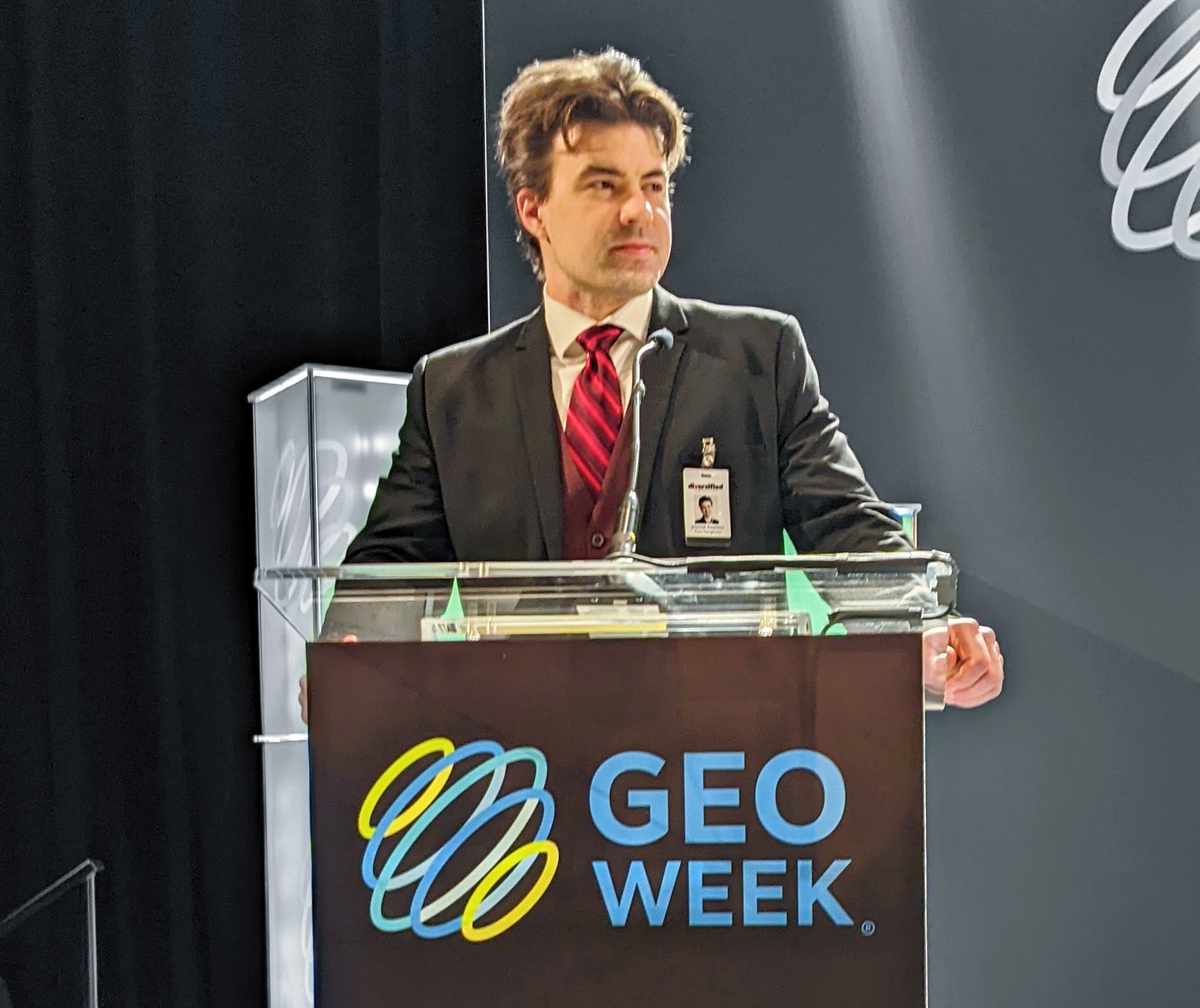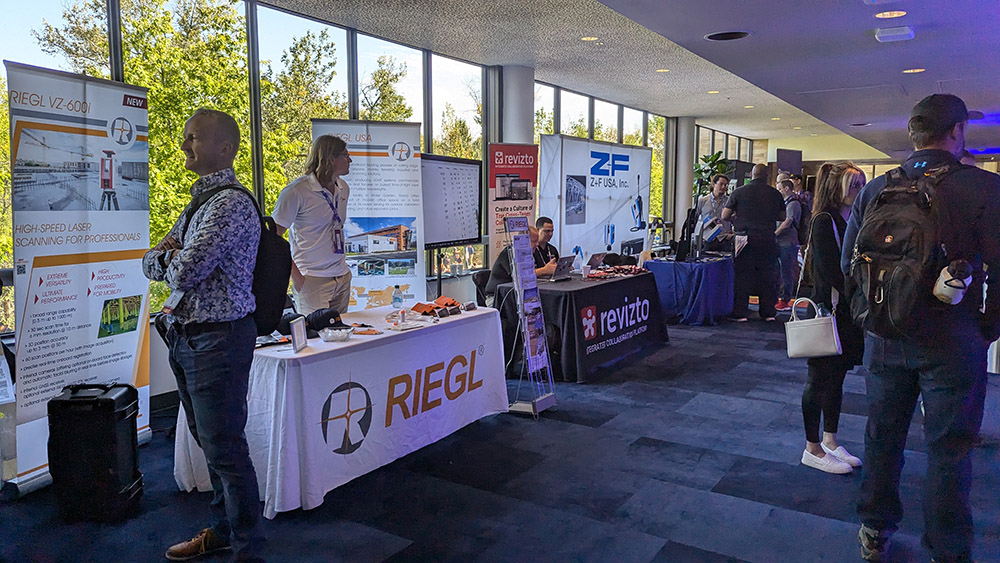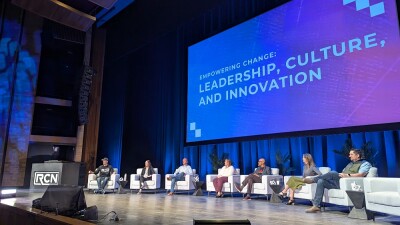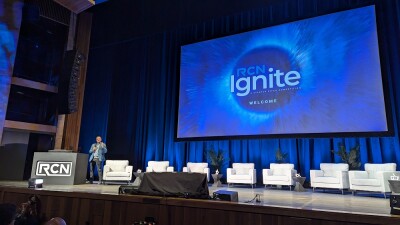We’ve highlighted some of the individual products as well as expert insights that attendees of Reality Capture Network’s R-CON 2024 were able to experience, but the solutions on display on the floor of the event exposed attendees to multiple tools that create efficiencies on numerous levels. Below is a quick look at a handful of them.
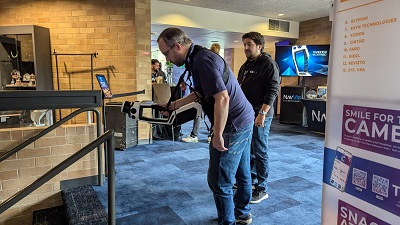 NavVis showed off the off MLX Scanner at Intergeo 2024, and R-CON attendees were able to similarly experience the new mobile scanner for themselves. Conversations centered on how easy it was to use and how the straps not normally associated with tools of this size enable longer use. Attendees were also able to perform short scans to get a sense of how the software alerted them in real-time regarding areas that were not fully scanned.
NavVis showed off the off MLX Scanner at Intergeo 2024, and R-CON attendees were able to similarly experience the new mobile scanner for themselves. Conversations centered on how easy it was to use and how the straps not normally associated with tools of this size enable longer use. Attendees were also able to perform short scans to get a sense of how the software alerted them in real-time regarding areas that were not fully scanned.
 RIEGL also displayed one of their primary scanners, with the VZ-600i on display at the booth. A live demo also took place on the first day of the event. It offers a broad range capability from 0.5 m up to 1000 m and is suitable for indoor and outdoor 3D mapping applications. Most attendee questions centered on the capabilities of the system and how these capabilities compared to not only the other scanning solutions on display elsewhere, but also to the cameras that are now included on everyone’s phones.
RIEGL also displayed one of their primary scanners, with the VZ-600i on display at the booth. A live demo also took place on the first day of the event. It offers a broad range capability from 0.5 m up to 1000 m and is suitable for indoor and outdoor 3D mapping applications. Most attendee questions centered on the capabilities of the system and how these capabilities compared to not only the other scanning solutions on display elsewhere, but also to the cameras that are now included on everyone’s phones.
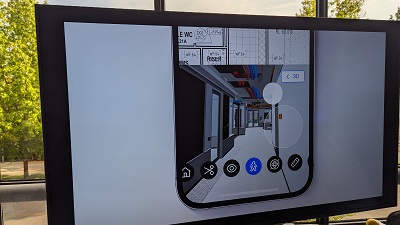 Reality capture is obviously a critical element of the event and larger community, but more and more conversations are centered on the organization of all this data, and what it means to organize and access it in a way that makes sense for individuals and teams that aren’t doing this work. That need is something the Revizto solution was designed to directly address by bringing together data from disparate solutions and in different formats into a single repository. The Revizto solution enables integrated collaboration so that instead of users having to continue to log into and out of disparate systems, they can get everything they need in a single place. Design tool agnostic, they’ve quantified operational efficiencies between the office and field.
Reality capture is obviously a critical element of the event and larger community, but more and more conversations are centered on the organization of all this data, and what it means to organize and access it in a way that makes sense for individuals and teams that aren’t doing this work. That need is something the Revizto solution was designed to directly address by bringing together data from disparate solutions and in different formats into a single repository. The Revizto solution enables integrated collaboration so that instead of users having to continue to log into and out of disparate systems, they can get everything they need in a single place. Design tool agnostic, they’ve quantified operational efficiencies between the office and field.
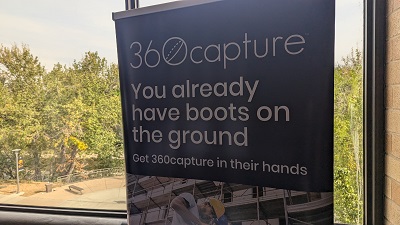 360Capture by VTS enables large-scale collection of assets to populate digital twin software with reliable and accurate 3D data. No matter the capture device, their solution actively alerts users around the work that needs to be done, helping to eliminate unnecessary rework. This information is then converted into industry-standard deliverables that meet the needs and specifications of a given client. Their solution provides users with the best possible representation of the reality on a given site or project.
360Capture by VTS enables large-scale collection of assets to populate digital twin software with reliable and accurate 3D data. No matter the capture device, their solution actively alerts users around the work that needs to be done, helping to eliminate unnecessary rework. This information is then converted into industry-standard deliverables that meet the needs and specifications of a given client. Their solution provides users with the best possible representation of the reality on a given site or project.
The team at RCN has already detailed the impact of professional hardware on large-scale data, but representation from Nvidia, Dell and Intel highlighted to attendees what kind of a difference computing hardware can make for projects that need to handle large-scale data. Organizations of all sizes need to assess how their hardware solutions are impacting overall productivity and whether or not data bottlenecks are about hardware, processes or both. Generational leaps in GPUs continue to change how such things need to be considered, highlighting why organizations the size of Dell and Nvidia are paying such close attention to the space.
These were far from the only solutions on display at Reality Capture Network, with industry stalwarts like Trimble and Leica along with newer ones like Virtual HQ and Stitch3D all having a space on the floor and on the stage, with products like Looq AI as well as solutions like Manifold highlighting the present and future of the entire industry.

